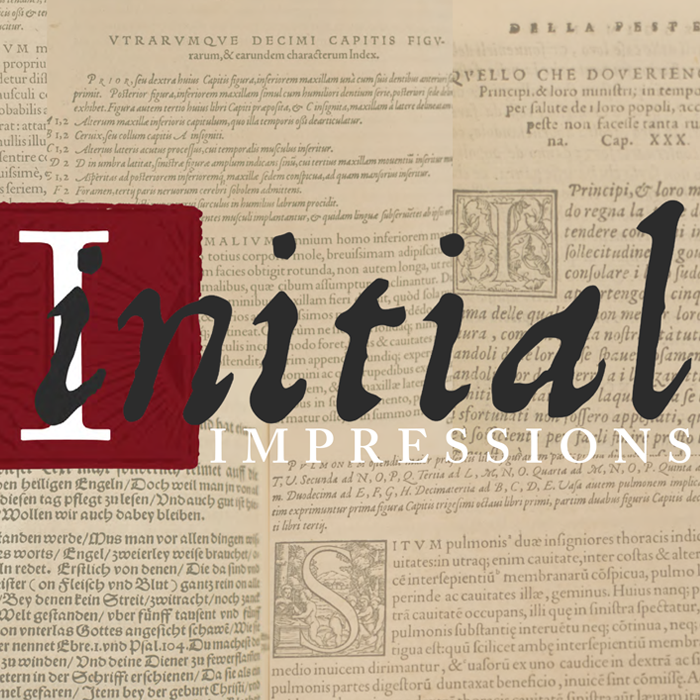
Andersen Library is home to a collection of over 6,000 printed ornamental capital letters donated by Dr. Claus Maywald of the Gutenberg Museum in Mainz, Germany. They are an exquisite time capsule of design, ornament and typography that are largely undiscovered. The exhibition will include some of the actual initials, the books in which they appear and modern interpretations of them cut using modern technology and printed via traditional letterpress methods.
Exhibition Details
Initial Impressions: Renaissance Type and The Grammar of Ornament
- January 25–September 27, 2020
- Gallery 241
- Curator(s): Bill Moran, Graphic Design Teaching Specialist & Ellie Pagel, graphic design senior
The inclusion of intricate initial capitals at the beginning of a paragraph was common in Medieval manuscripts as early as the 7th century CE. Scribes would frequently add decorative illustrated letters to embellish the page. That tradition carried on after Johannes Gutenberg’s invention of printing using metal type and a printing press in Europe in 1439. Rather than hand illustrating each capital, printers carved decorative letters in wood and composed them in the press with metal type to replicate the scribe’s hand-drawn art.
The resulting letterforms were so striking that collectors often cut them out of books and manuscripts during the late 19th century. Dr. Claus Maywald, head librarian at the Gutenberg Museum in Mainz, Germany, assembled over 6,000 examples of these initials that had been removed from books and donated this important collection to the University of Minnesota’s Andersen Library in 2011.
This exhibition of Renaissance initial capitals from the Maywald Collection includes ornamental initials from 1470 to 1690, books containing exemplar initials, and contemporary reproductions created using modern technology and printed using traditional letterpress methods.
The letters in the exhibition reflect a range of letterform styles including:
- Floriated — With plant and/or flower motifs
- Historiated — With people or places from a specific story
- Inhabited — With people, mythical beings, or faces
- Speaking — Representing the first letter of the subject, i.e. C for Cecelia
- Zoomorphic — With animals • Criblée — With a stippled dot pattern in the background
- Calligraphic — Representing the stroke of the flat-nibbed pen
- Ornamental — Decoration that is nonrepresentational.
These letterforms reveal the unparalleled craftsmanship and imagination of wood engravers who created wood type for use in early printing. The detail achieved by the carvers was done mostly without magnification and using only natural light. Many of these letters are no larger than postage stamps and the skill required to do this (backwards and in relief) is extraordinary. After over 500 years, these intricate initials continue to fascinate us today.
Exhibition Images






